There’s lots of theory that failure is a great learning device, should be welcomed, encouraged and supported. And I absolutely agree. There also lots of talk about 70% of changes failing with little or no evidence and with that we do not agree, if it wasn’t frowned upon we’d probably show it the middle finger.
The tricky thing with failure, is it can be realised because your context isn’t right or your change isn’t optimised (rather than a gift from the Universe). But there could actually be a fundamental flaw with your plan to change. And there’s a difference between something not going quite right, to something that could detrimentally impact your organisation or people.
If you think your change is actually going up the swanny (read: royally f*cked) – where the outcomes are likely to leave you in a worse place than where you have set off from or an unintended consequence has been brought to light, this is what I want you to do: take a breath.
Literally breathe and slow down your thoughts.
I remember like it was yesterday, the first time a change I was in charge of went up the swanny. Everything about it was solvable but that feeling of my stomach dropping, heart rate kicking up a notch or two and some very sweaty palms means it’s something I will never forget. Nobody else remembers it though.
It happens. It happens because change isn’t perfect and controlled, it’s a sequence of hypotheses at the whim of people (sounds great!). The control you can exert only reaches so far and you literally cannot know all the answers, predict outcomes or second guess everything that comes your way. You will eventually be able to spot issues or identify likely downfalls of your change as you do more, getting the reps in building your change muscles.
What you can do is identify the root cause – is the change wrong or the approach wrong or have we been slapped in the chops with a curve ball? Going back to the original change goal and the evidence that informed the decisions and the plans that followed will help you track back to see if something is adrift at the cause of change.
You might want to re-visit some of the activities and tools we have covered so far (AHEM) to help you do this.
But for speed start by asking yourself:
-
- Is your change still fit for purpose?
- What is working well?
- What are your blockers?
You might find the problem to be solved here. If not, we can look at the implementation to see what’s going on;
-
- What are you being told (and what are you hearing)?
- How are your people feeling?
- Are you coping (think organisational change load, systems, processes and constraints)?
Working through these questions and reflecting on where you are (honestly), might not mean you are able to pin-point the root cause to that email sent on a wet Wednesday but if you can get close to the cause you can look to resolve or move on.
When we know what has happened we can decide on what you want to do next. There are some relatively simple options:

- Do nothing and carry on as is – this could be sensible if you disprove there was an issue, or you can isolate it and resolve it.
- Course correction – vary the approach, change the scale of the change, re-prioritise. Maybe you can still deliver the change and intended outcomes with a variation. It takes us right back to the start about knowing what your tolerances are, what are you willing to do to deliver?
- Can it; stop the change effort dead in its tracks – this could be forever, or time boxed if the root cause needs significant time or correction. Its ok to stop change if its not getting you to where or what you need. It’s not OK to mindlessly keep flogging a change because you said you would. It takes nerve to stop a change, it’s likely that you’ll need to make a case to stop especially if there’s been investment, or the outcomes mitigate something risky or maximise a needed opportunity.
Stuff is going to go wrong, money will be wasted, time will be lost and yes, your ego will be bruised. But we create and curate change to improve where we are, to create new worlds and opportunities. So, make sure it’s right, make it worth it and stay honest.

First published in the Everyday Change Play book November 2022
